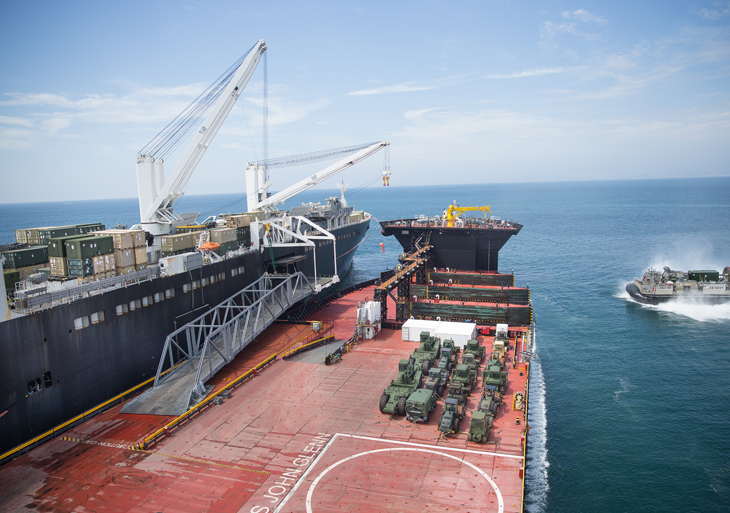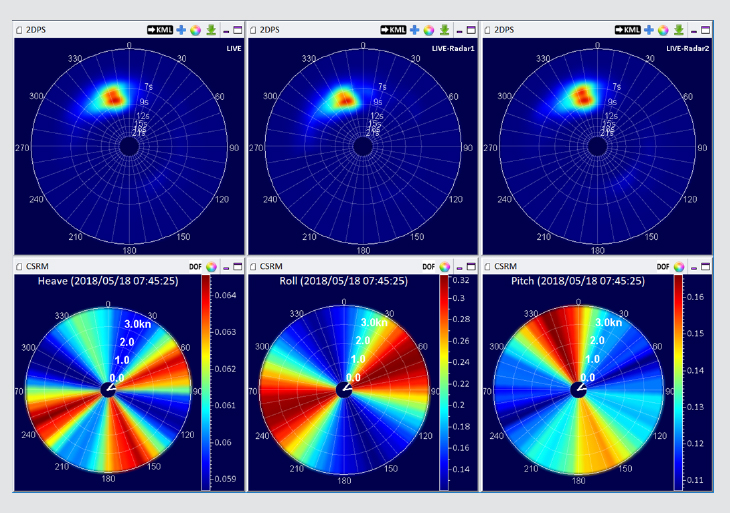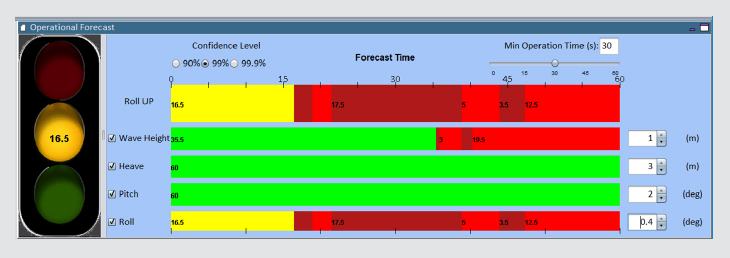
(U.S. Marine Corps photo by Lance Cpl. Roxanna Gonzalez)
The Ramp was a Cause for Concern
- Can only withstand limited twist due to relative ship motions
- Seabasing operations must take place world-wide in a variety of conditions
FuturesWaves Provides:
- Recommended best heading for minimizing relative roll motion
- Warning for large motion events to avoid dangerous ramp conditions
Application: Seabasing
- The Office of Naval Research (ONR) sponsored a multi-year, multi-million dollar effort to improve workability and safety for this complex ship-to-ship operation
- A RO/RO vessel (left) is moored, while still underway, to a docking vessel (center), which is ballasted-down to allow for large air-cushion vessels (right) to dock within bays shown here on the starboard side
- Vehicles, construction equipment, etc., are offloaded from the RO/RO to the air-cushion vessels via the docking vessel and taken ashore for rapid deployment

Impact 1: Course/Speed Recommendation Module (CSRM)
- Real-Time Directional Ocean Wave Power Spectrums
- In this example, CSRM guidance shows a course to NNW or SSE to minimize vessel motions
- Significant impact in multi-modal seas situations

Impact 2: Anomalous Event Timing (OpBar)
- Ideal for operation in marginal conditions or assurance that an unexpected rogue-wave-like encounter does not cause incident
- In Seabasing example, ~30 secs is needed to move a vehicle down the ramp and relative roll cannot exceed a ramp-twist limitation
